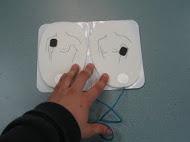Check the condition of the victim
- Before you decide to use an AED on a patient, the first thing you need to do is confirm whether he or she is conscious. If the victim is conscious, you should not use the device on him her.
- As you try to check whether an infant or a young child is conscious, you need to pinch the skin instead of shaking the victim.
- Look at the breathing rate and pulse. If you recognize some irregularities or there is no breathing or pulse, then make use of AED immediately.
Get ready to use automated external defibrillator
Before using the AED:
- Ensure that the victim is in a dry area or away from any water or puddles.
- Look whether he has some body piercing or any outline of a medical device that may be implanted. Some of the devices you should check include implantable defibrillator or a pacemaker.
- The AED pads should be put at least one inch away from any of the implanted devices or piercings.
Using an AED
For infants or children who are below eight years, you should use pediatric automated external defibrillator. It is not advisable to use the one designed for adults. Follow the following steps as you use the device.

- Turn it on
- Ensure the chest is dry
- Attach all the pads
- Ensure the plug is connected if it is needed.
- Check the device and push the analyze button
- If there is a need for shock, ensure that there is no one touching the patient and push the shock button
- Begin or resume doing the chest compressions
- Continue following the prompts given by the AED.
After using AED continue conducting CPR
- After conducting CPR for two minutes, check the rhythm of the heart. In case, of irregular or absence of heart beat, apply another shock.
- If there is not need for a shock, move one with CPR until the emergency service provider arrives.
